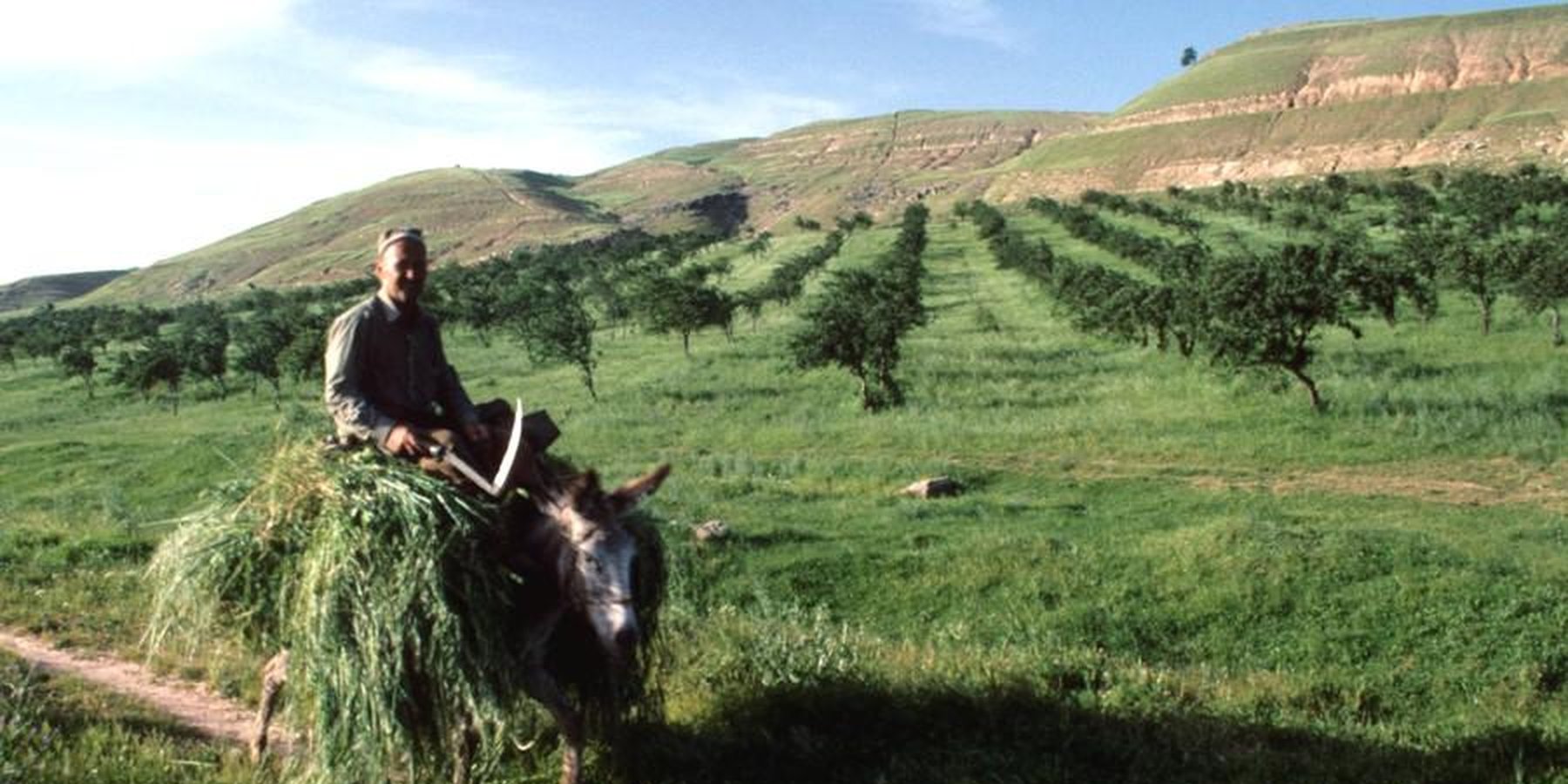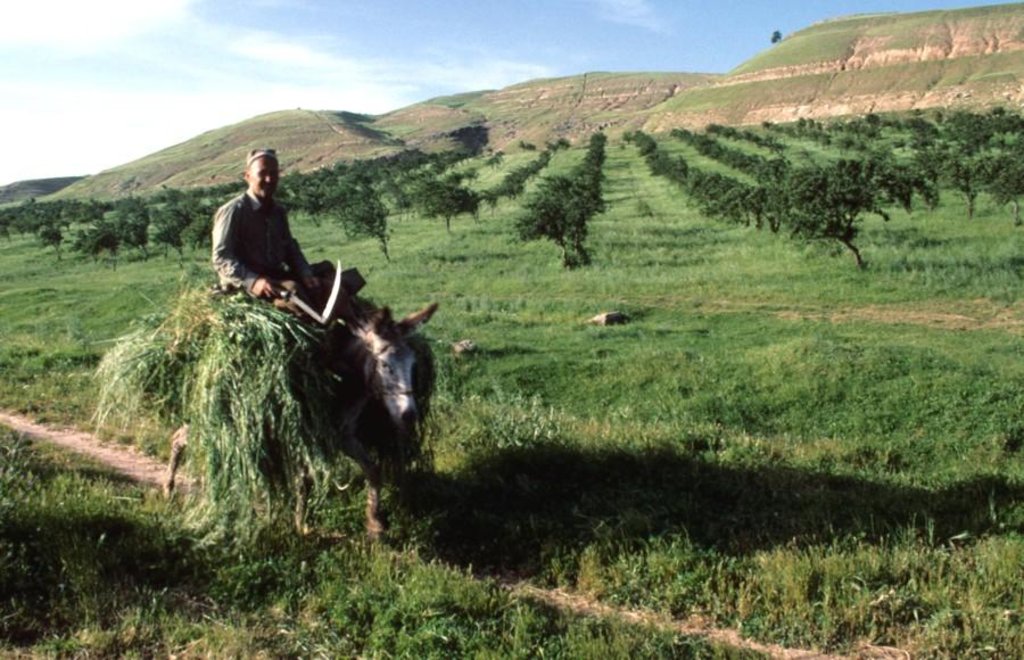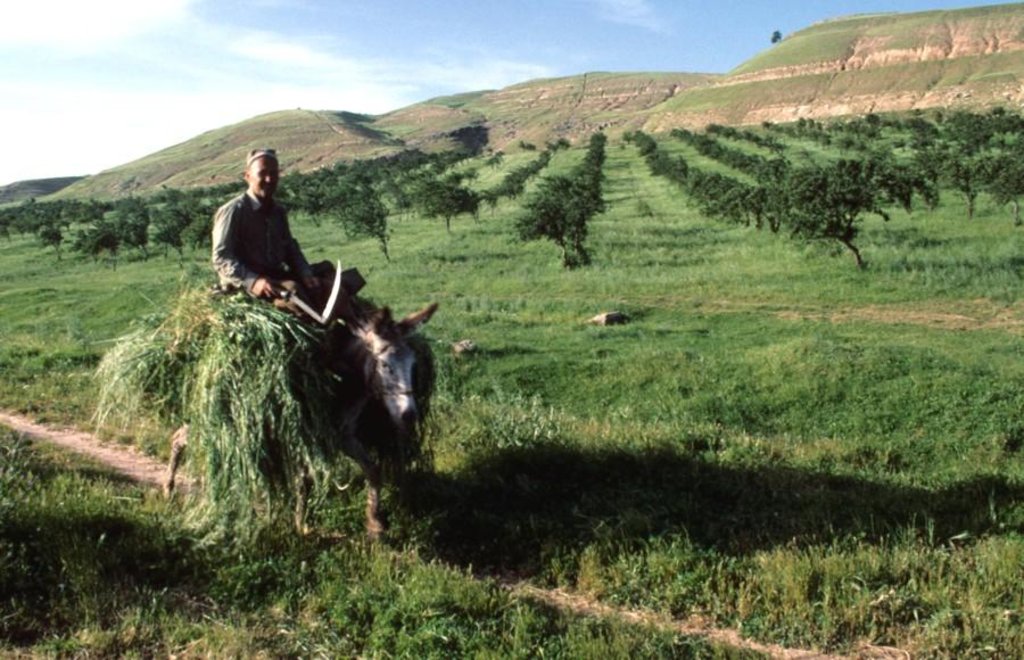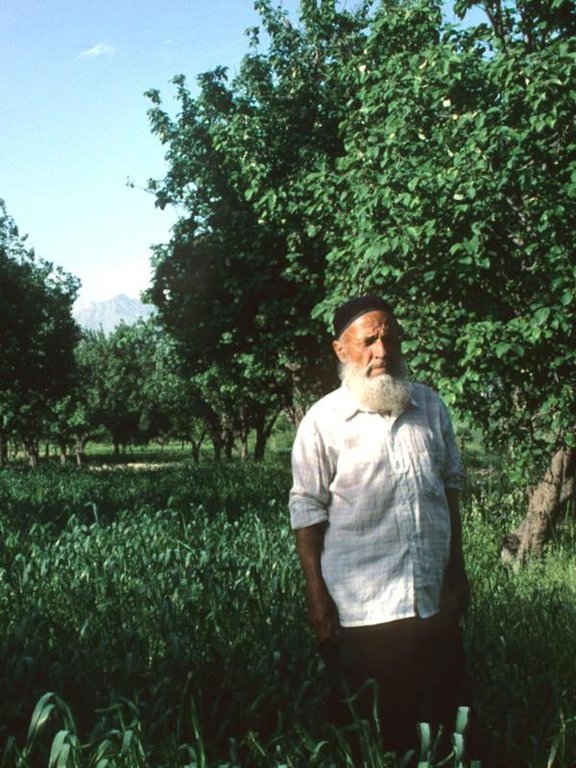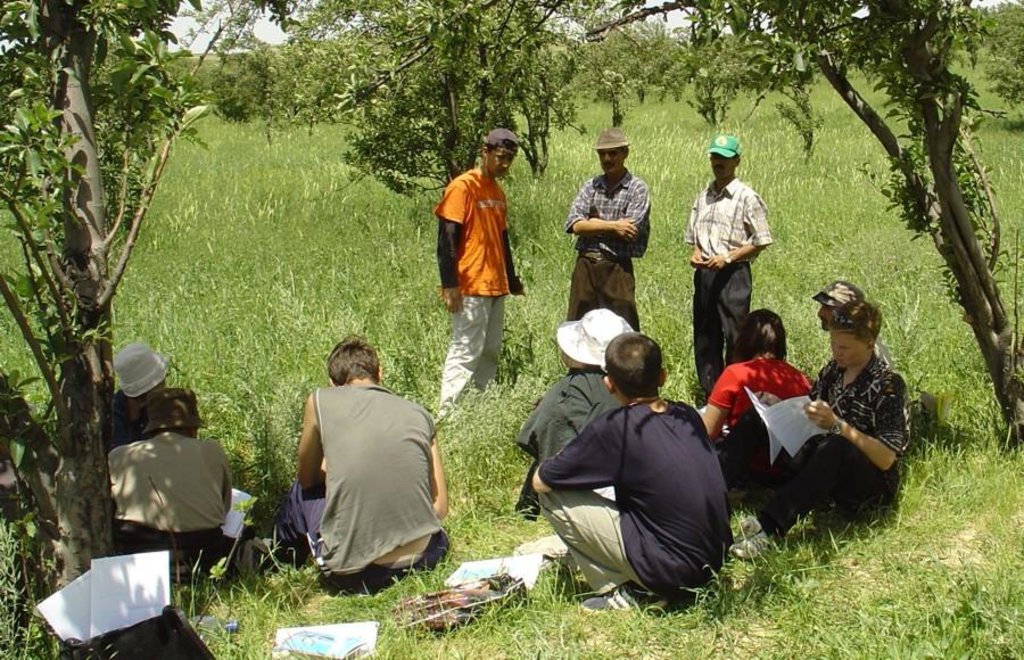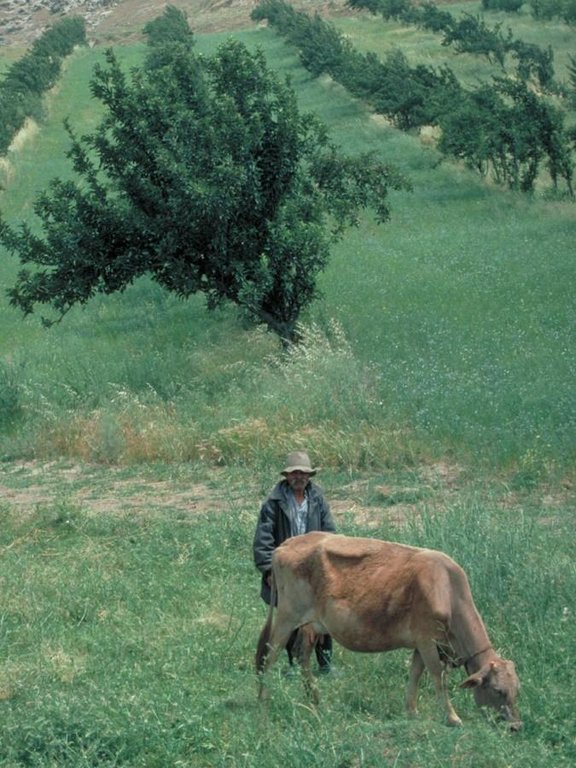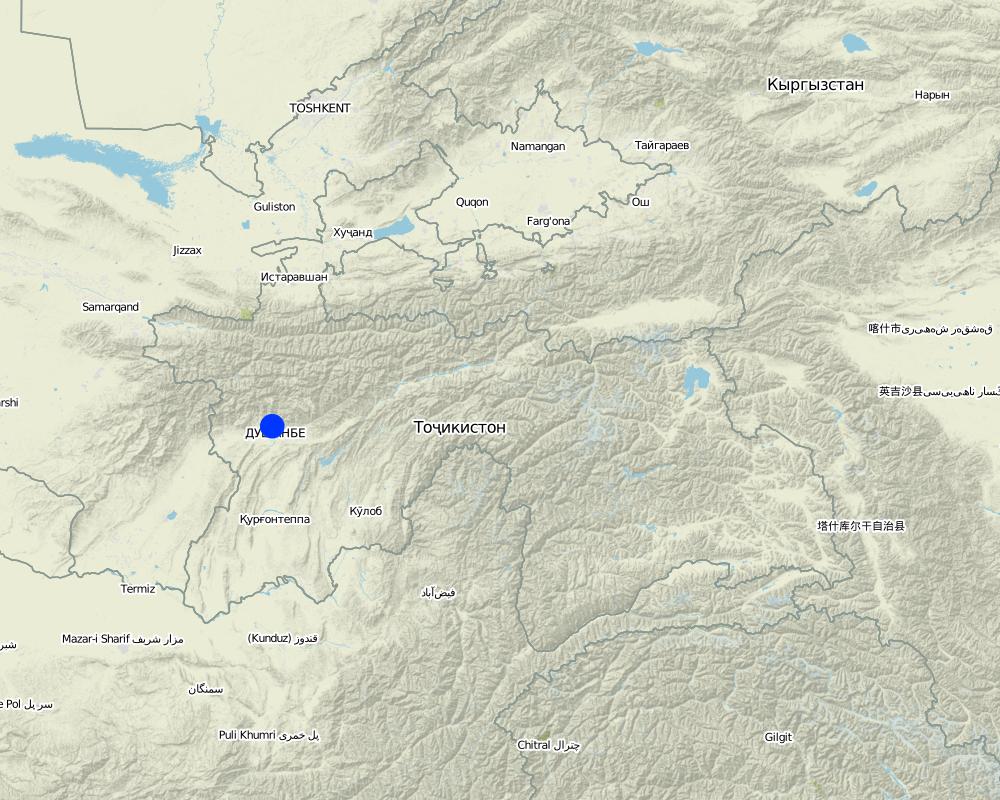Transition from a centralised regime to a local initiative [Tajikistan]
- Creation:
- Update:
- Compiler: Sanginboy Sanginov
- Editor: –
- Reviewers: David Streiff, Alexandra Gavilano
approaches_2660 - Tajikistan
- Full summary as PDF
- Full summary as PDF for print
- Full summary in the browser
- Full summary (unformatted)
- Transition from a centralised regime to a local initiative: July 5, 2017 (inactive)
- Transition from a centralised regime to a local initiative: Aug. 7, 2017 (inactive)
- Transition from a centralised regime to a local initiative: April 4, 2018 (inactive)
- Transition from a centralised regime to a local initiative: Nov. 2, 2021 (public)
View sections
Expand all Collapse all1. General information
1.2 Contact details of resource persons and institutions involved in the assessment and documentation of the Approach
Name of the institution(s) which facilitated the documentation/ evaluation of the Approach (if relevant)
Soil Science Institute (Soil Science Institute) - Tajikistan1.3 Conditions regarding the use of data documented through WOCAT
The compiler and key resource person(s) accept the conditions regarding the use of data documented through WOCAT:
Yes
1.4 Reference(s) to Questionnaire(s) on SLM Technologies
2. Description of the SLM Approach
2.1 Short description of the Approach
A land use system established during the previous authoritarian regime of the Soviet Union is now being adapted to the farmers' needs via their own initiative.
2.2 Detailed description of the Approach
Detailed description of the Approach:
Aims / objectives: This case study compares two approaches which both contributed to the development of the current orchard-based agroforestry system: (1) Soviet approach: the previous state-run dictatorial system of the soviet times and (2) Farmers initiative: the current bottom-up approach. Farmers from the hilly Faizabad region with its deep and highly erodible loess soils had traditionally combined the cultivation of beans and wheat with fruit trees. During the 1980s the Soviet administration decided to intensify apple production in this area and to establish orchards on a large scale, making use of the well suited environmental conditions. The system introduced, comprised of densely planted purestand orchards, mechanically constructed terraces (where the slopes required this), and an irrigation system. Establishment was conducted through a top-down/authoritarian approach, and all inputs for implementation and maintenance were provided by the state. Farmers worked as employees on the state farms and received cash wages.
Methods: After the collapse of the Soviet Union and the start of the civil war, Tajikistan suffered from acute food shortages. In 1993, the Tajik government lifted the prohibition on planting wheat in rainfed areas. Farmers renting the land of the former state farms began to revert to intercropping annual crops, mainly wheat and beans, between thinned rows of apple trees. This was for both household use and for sale at the market. The initiative came from the farmers, and reflected the traditional system of production. However the pumping station and irrigation system have not been working for the last 10 years and therefore supplementary irrigation has not been available. In contrast to former times, decision-making, management activities, and provision of inputs/finance are all carried out by the land users themselves. In some cases, marginal farmers received incentive support from NGOs or from the World Food Programme. Systematic assistance from extension services, financial support to purchase pesticides or fertilisers, and investment to restore the irrigation system would all help to improve the agroforestry system and thus increase yields.
2.3 Photos of the Approach
2.5 Country/ region/ locations where the Approach has been applied
Country:
Tajikistan
Region/ State/ Province:
Faizabad
Map
×2.6 Dates of initiation and termination of the Approach
Indicate year of initiation:
1993
2.7 Type of Approach
- traditional/ indigenous
2.8 Main aims/ objectives of the Approach
The previous Soviet approach aimed to increase apple production in a region with ideal environmental conditions. The current approach used by farmers aims to make more intensive use of agricultural lands through an agroforestry system, and especially to provide food security by growing annual crops between the trees.
The SLM Approach addressed the following problems: - Soviet times: the original problems addressed by the authorities during the soviet era were how to increase agricultural production, without consideration of the needs of the local rural population. - Post-soviet period: in 1993, when the soviet era ended, and the prohibition on cultivation of wheat was lifted, the underlying problem was a shortage of food, especially of wheat.
2.9 Conditions enabling or hindering implementation of the Technology/ Technologies applied under the Approach
availability/ access to financial resources and services
- hindering
1) Soviet Approach: The establishment and maintenance of the irrigation system, terraces and the orchards themselves required high financial input.
2)Farmers' initiative: Lack of funds for fertilizers, manure (which is burned as fuel for heating) and pesticides.
Treatment through the SLM Approach: 1) Equipment, seedlings and salaries were all provided by the central Soviet state.
2) Improved fertility management: farmers developed cost-effective practices such as crop rotation and fallow periods etc.
legal framework (land tenure, land and water use rights)
- hindering
The existing land ownership, land use rights / water rights hindered a little the approach implementation Allowing cropping on the farms was the first step; then land use rights were moved from state to individual farmers. While those orchards, which are still managed as state farms, are often not well looked after, renting of land and issuing of landholder certificates, generally leads to improved orchard management. However, access to land belonging to state farms (through rental agreements) is limited.
3. Participation and roles of stakeholders involved
3.1 Stakeholders involved in the Approach and their roles
- local land users/ local communities
- teachers/ school children/ students
- national government (planners, decision-makers)
3.2 Involvement of local land users/ local communities in the different phases of the Approach
| Involvement of local land users/ local communities | Specify who was involved and describe activities | |
|---|---|---|
| initiation/ motivation | none | Involvement during the current approach: self-mobilisation, farmers' initiative to increase crop production by intercropping in orchards |
| planning | none | Involvement during the Soviet approach: none Involvement during the current approach: farmer's are fully involved using their own initiatives. |
| implementation | none | Involvement during the Soviet approach: payment for casual labour. Involvement during current farmers' initiative: interactive/self-mobilisation, responsibility for all steps, technical assistance from extensionists. |
| monitoring/ evaluation | none | Involvement during the Soviet approach was interactive, via observations, public meetings, workshops, etc. Involvement during current farmer's initiative: includes self-mobilisation, interactive, responsibility for all the steps, technical assistance from external sources. |
| Research | none | Involvement during the Soviet approach was passive: technology development in the Faizabad Horticulture Institute. Involvement during current farmers' initiative: none. |
3.4 Decision-making on the selection of SLM Technology/ Technologies
Specify who decided on the selection of the Technology/ Technologies to be implemented:
- mainly land users, supported by SLM specialists
Explain:
Soviet approach: decisions made by the state and local authorities. Current farmer's initiative: decisions made mainly by land users themselves supported by specialists.
Decisions on the method of implementing the SLM Technology were made by mainly by land users supported by SLM specialists. Soviet approach: decisions made by technical specialists. Current farmer's initiative: decisions made mainly by land users supported by agricultural extension service (technical assistance).
4. Technical support, capacity building, and knowledge management
4.1 Capacity building/ training
Was training provided to land users/ other stakeholders?
Yes
Subjects covered:
Training was provided on-the-job, by public meetings and through courses. Training focused on improving irrigation, tree planting practices and tree management. Training conducted during the establishment of the orchards was useful and adequate. No training was given (naturally) in intercropping of wheat and other cereals between the rows of apple trees the farmers??? initiative. However in order
4.2 Advisory service
Do land users have access to an advisory service?
Yes
Describe/ comments:
Key elements: For running the orchards during Soviet times a top-down/authoritarian approach was used
4.3 Institution strengthening (organizational development)
Have institutions been established or strengthened through the Approach?
- no
4.4 Monitoring and evaluation
Is monitoring and evaluation part of the Approach?
Yes
Comments:
bio-physical aspects were ad hoc monitored by 0 through observations; indicators: erosion and crop growth - sedimentation and plant development
economic / production aspects were regular monitored by 0 through measurements; indicators: farmers' yield and profit
area treated aspects were ad hoc monitored by 0 through measurements; indicators: None
no. of land users involved aspects were ad hoc monitored by 0 through observations; indicators: None
There were no changes in the Approach as a result of monitoring and evaluation: None under either.
4.5 Research
Was research part of the Approach?
Yes
Give further details and indicate who did the research:
During the original establishment of the orchards, research was conducted. For the new system of intercropping with wheat, research contributed by providing support with respect to choice of varieties.
5. Financing and external material support
5.1 Annual budget for the SLM component of the Approach
Comments (e.g. main sources of funding/ major donors):
Approach costs were met by the following donors: local community / land user(s) (by the farmer's initiative): 100.0%
5.2 Financial/ material support provided to land users
Did land users receive financial/ material support for implementing the Technology/ Technologies?
No
5.4 Credit
Was credit provided under the Approach for SLM activities?
Yes
Specify conditions (interest rate, payback, etc.):
Repayment conditions: For the original establishment of the orchards loans were provided by the state at a very low interest rate. Currently, for cultivating cereals and legumes, farmers have access to loans, but the interest rate is very high..
6. Impact analysis and concluding statements
6.1 Impacts of the Approach
Currently: moderately positive impact on soil and water conservation through the agroforestry system.
Did other land users / projects adopt the Approach?
- No
- Yes, little
- Yes, moderately
- Yes, greatly
None known.
6.2 Main motivation of land users to implement SLM
- increased production
This case illustrates the challenges in the transition from state-run large-scale farming to individual management of smaller units. In this case, soviet Tajikistan had established pure-stand orchards. However, in response to acute food shortage during the civil war, farmers started to intercrop wheat and beans in their orchards: a better all-round production/conservation system.
6.3 Sustainability of Approach activities
Can the land users sustain what has been implemented through the Approach (without external support)?
- no
If no or uncertain, specify and comment:
The Soviet approach of orchards managed through state farms effectively died out with the collapse of the Soviet Union: the irrigation system ceased to function and inputs were not provided anymore by the state. Furthermore, the land use system was not adequate.
6.4 Strengths/ advantages of the Approach
| Strengths/ advantages/ opportunities in the compiler’s or other key resource person’s view |
|---|
| Farmer's initiative: Farmers get diversified and additional products (grain, apples, beans, hay, etc). (How to sustain/ enhance this strength: The government should support the farmer's initiatives. The marketing system for selling fruits should be better developed.) |
| Farmer's initiative: Farmers themselves are finding a way out of the poverty trap. (How to sustain/ enhance this strength: Land reform should be improved and every farmer should be eligible for land certificates/titles.) |
| Soviet approach: Well managed and controlled land use system with efficient irrigation system, high production, ensured maintenance, provision of fertilisers and technical assistance. |
6.5 Weaknesses/ disadvantages of the Approach and ways of overcoming them
| Weaknesses/ disadvantages/ risks in the compiler’s or other key resource person’s view | How can they be overcome? |
|---|---|
| Farmer's initiative: Further extension of the agroforestry system is limited without support from the extension service | The extension service should provide more inputs. |
| Farmer's initiative: Land use rights: as long as the land still belongs to the state, people have very little motivation to improve it | Privatise the land. |
| Soviet approach: No diversity, mono-cropping system aimed at maximised production; as soon as state support ceased, the system collapsed. |
Links and modules
Expand all Collapse allLinks
No links
Modules
No modules


